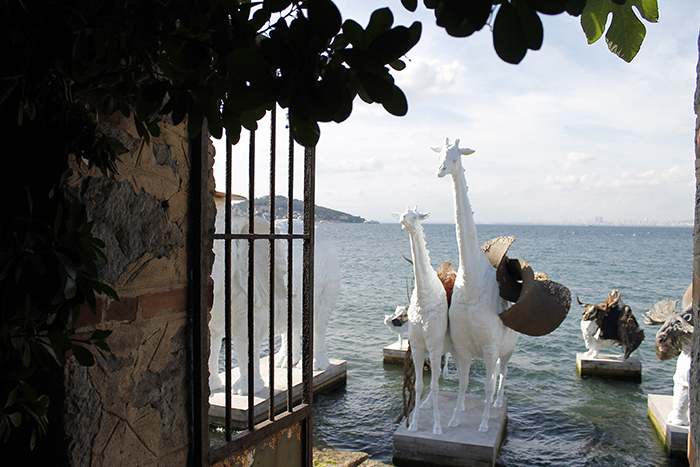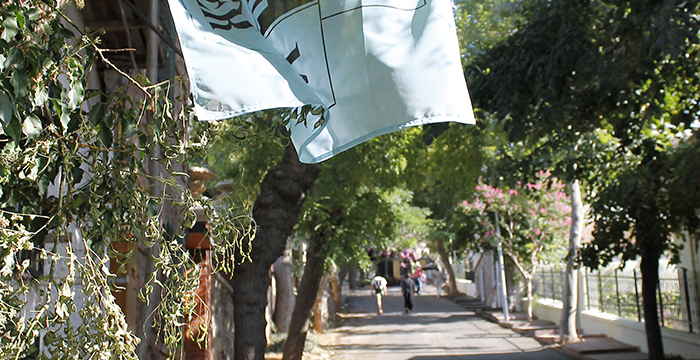Following footsteps of Art and Trotzki in Istanbul
Art speaks for itself. That’s true. But anyway, it’s also about the location and about the interaction between the art piece and its show room, especially then, when an international art exhibition like the Istanbul Biennial takes place.
Saltwater: A Theory of Thought Forms is the theme of the 14th Istanbul Biennial and according to Istanbul’s geographic position, it links to different locations in and around Istanbul: The Black Sea coast, the places in the city center around the Bosporus and the Golden Horn as well as the Princes’ Islands in the Sea of Marmara. Referring to the last point, especially this spot shows the strength of Istanbul as being one of the hosting locations of the Biennial. The metropolis can offer venues with a vast potential to emphasize the Biennial’s artist’s works by offering the possibility of a harmonic interaction between the art peace and its location.
There are seven spots on Büyükada, hosting the Istanbul Biennial’s exhibitions. After reaching the island via ferryboat, the first point of interest isn’t far away and gives a good foretaste of what is to come. Placed on a boat called Kaptan Paşa, there are works shown of the artists Pınar Yoldaş and Marcos Lutyens. Yoldaş seizes the Biennial’s topic by working with water pumps, pipes and an air compressor to show the flow of life referring to the ocean as well as to the heart. Lutyens work is made out of different materials and mediums such as parts of a wooden boat, felt, lamps and sound recordings. The strength of every art work through the combination of different elements and through the synergy between the art piece and its location can be seen in both works, as well as in other exhibitions shown on Büykada. The South African artist William Kentridge who is showing a 5-channel video projection exceeds the screen by using room door’s windows as a screen in the first story of the Hotel Splendid Palace. Another example of this interaction is the work of the Berlin based artist Susan Philipsz, showing black-and-white photographs and convincing through its presentation and sound recordings.
In addition to that, also the striking work of Ed Atkins should be named which captures its visitors by the bizarre but fascinating contrast of having a 3D-movie installation shown in an old traditional wooden house. Finally, would we talk about a theatre piece, the last point on the map can be seen as the climax, the peak after many good art pieces on Büyükada: Adrián Villar Rojas impressive work seems to be intentionally hidden. After a few minutes walk through green and a ruin – the former home of Leon Trotzki – the visitor finds himself in front of The Most Beautiful of All Mothers. Organic and inorganic material – both together creating the imposing installation. Even the scenario might inhere absurdity at the first glance, it seems like the installation belongs to that place – embedded in the water, on the coast side of Büyükada, with Istanbul’s skyline in the background.
Even it takes a long time to get to Princes’ Islands biggest island, Büyükada, it’s worth visiting and getting the spirit created by different elements, appealing to all senses. Therefore, eyes and ears should be wide open.
[widgetkit id=19686]
Excerpt of sound recordings which are part of the works of the Biennial’s artists Marcos Lutyens, William Kentridge, Ed Atkins, Susan Philipsz, Daria Martin. 2015.
14th Istanbul Biennial
5.9.2015 – 1.11.2015





